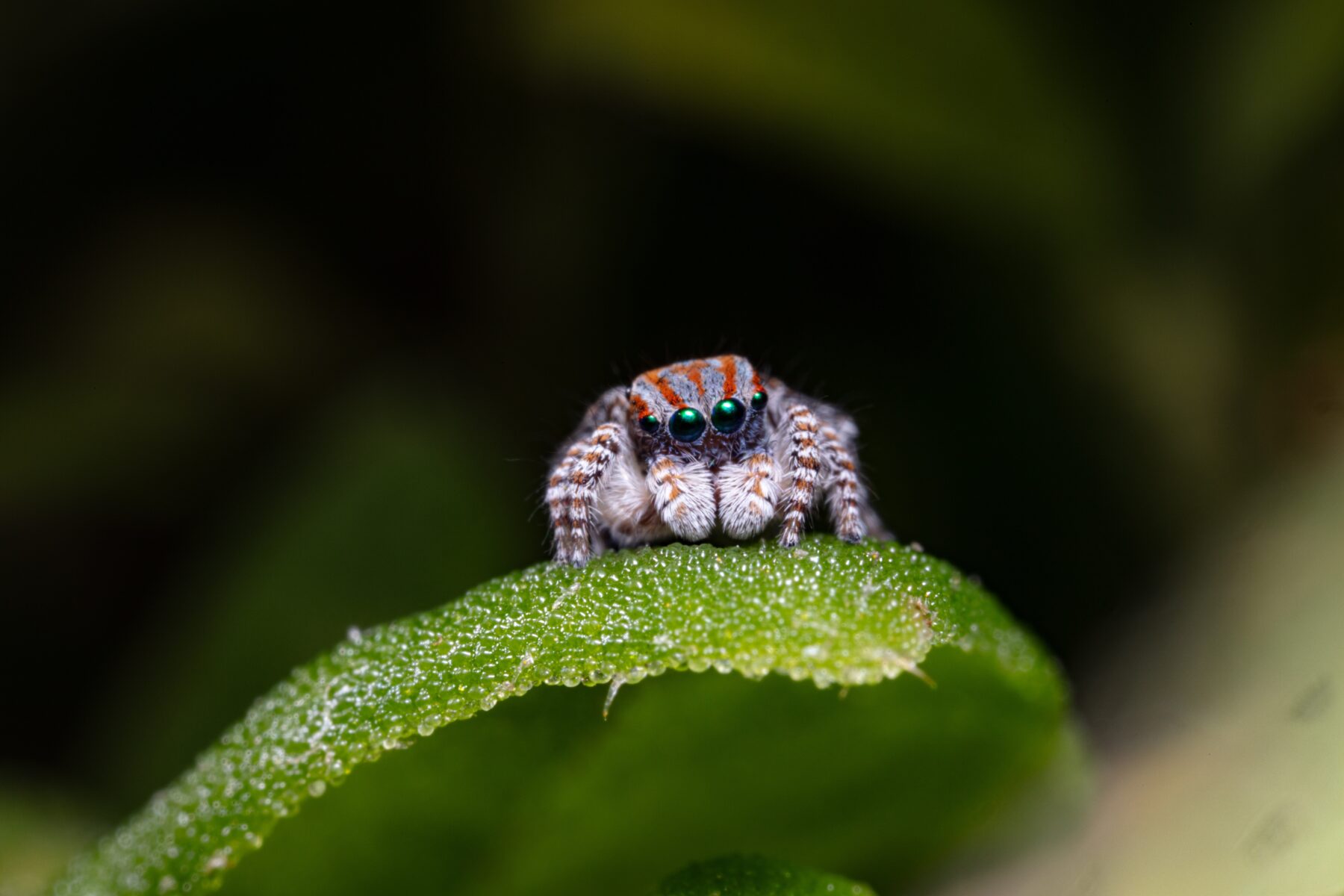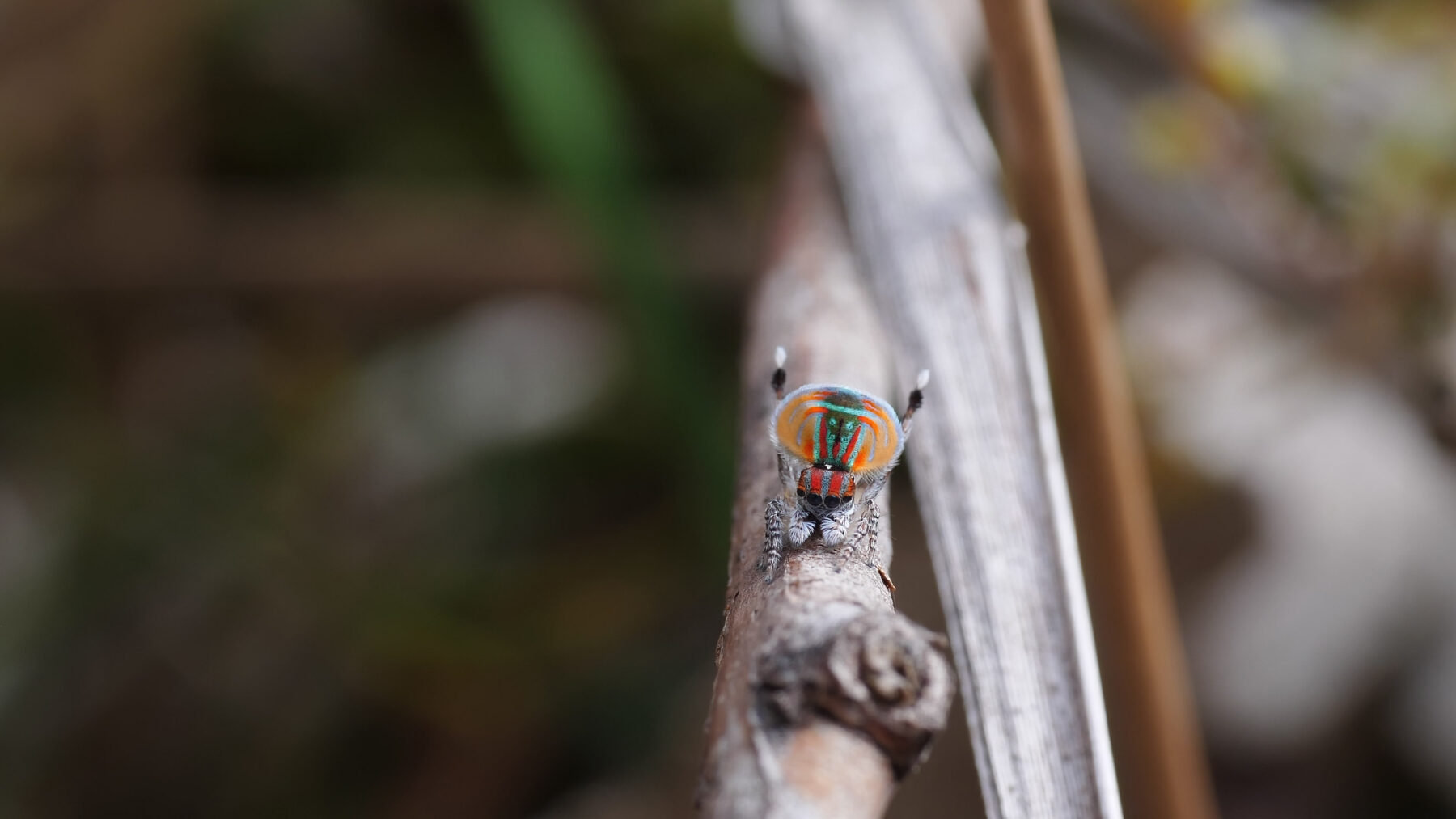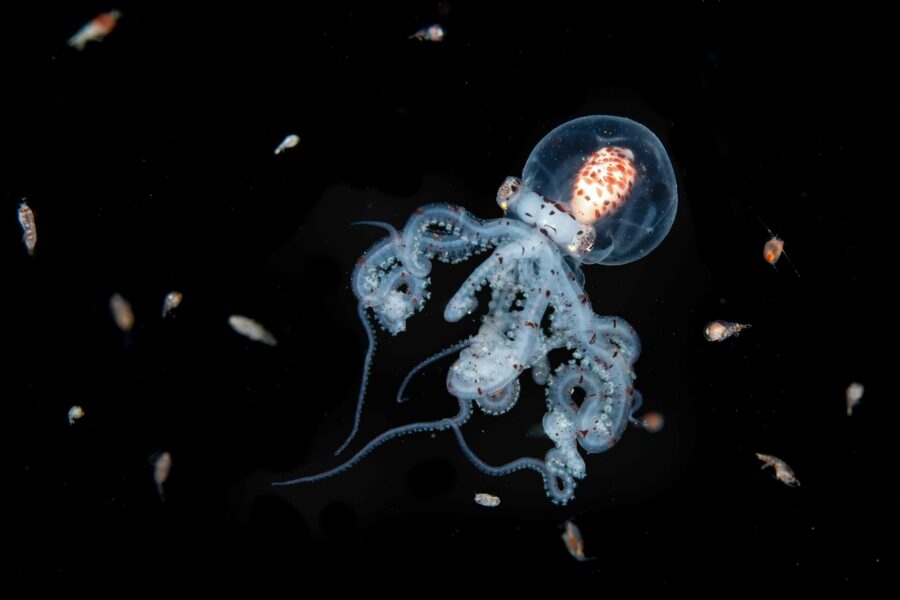| Common name | Peacock spider |
| Scientific name | Maratus (genus) |
| Type | Arachnida |
| Diet | Small insects and other tiny arthropods |
| Average lifespan | Up to one year |
| Size | Varies by species, typically 2–6mm long |
CONSERVATION STATUS (Australia): Varies by species
Perhaps no arachnid has captivated the public imagination more in recent years than the peacock spider. Photos and videos of male peacock spiders’ dazzling colours and elaborate courtship displays have taken social media by storm.
These gorgeous arachnids probably flew under the radar for so long because they’re so tiny – just 2–6mm long, depending on the species, and weighing as little as 2mg. Despite their size, peacock spiders are skilled hunters that eat a variety of small invertebrates.

Found exclusively in Australia, these charismatic jumping spiders all belong to the genus Maratus. There are now more than 110 described species of peacock spider in Australia, but there are almost certainly more to be discovered. In 2011, just seven peacock spider species were known to western science.
Females typically have a mottled brown or grey body, providing camouflage against predators. Males, however, have brilliantly coloured abdomens made from iridescent scales and hairs, and elongated third legs that often end with a white tip. During courtship displays, a male raises his abdomen and lifts his third legs. Many species have lateral flaps that unfold like a fan from their abdomen, explaining their ‘peacock’ common name. The colours, patterns and shapes of these abdominal flaps vary by species.
Habitat
Peacock spiders occur in a range of habitats across southern and eastern Australia, including coastal forests, scrublands, grasslands and open woodlands.
Distribution
Most peacock spider species occur in subtropical and temperate regions in southern and eastern Australia. Some have very restricted distributions, such as the Maratus yanchep, which lives in a small area of coastal sand dunes near Yanchep, about 55km north of Perth.


Conservation status
Many peacock spider species are newly described, so their conservation status remains unknown. One species – Sarah’s peacock spider (Maratus sarahae) – known only from Western Australia’s Stirling Range, was declared critically endangered in 2018.
Reproduction
Male peacock spiders attract mates by performing elaborate courtship displays, in which they flaunt their colourful abdomen flaps and raise their third legs in the air, while performing ‘dance’ moves. After mating, females will lay eggs in a silk cocoon, which she will vigilantly guard until the spiderlings emerge some 4–5 weeks later.
Peacock spiders typically live for up to a year. Individuals hatch from eggs in summer and go through several rounds of moulting before reaching adulthood.

Threats
Many species of peacock spiders have restricted ranges, making them vulnerable to habitat loss, climate change and altered fire regimes.
Fascinating fact
A male splendid peacock spider (Maratus splendens) can jump 15 times its body length.









